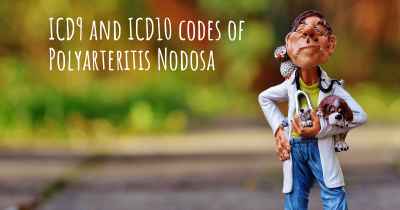What is the life expectancy of someone with Polyarteritis Nodosa?
Life expectancy of people with Polyarteritis Nodosa and recent progresses and researches in Polyarteritis Nodosa

Polyarteritis Nodosa (PAN) is a rare autoimmune disease that affects the medium-sized arteries, leading to inflammation and damage. The prognosis for individuals with PAN can vary depending on various factors, including the severity of the disease, response to treatment, and overall health. Without appropriate treatment, PAN can be life-threatening. However, with early diagnosis and proper management, the prognosis can significantly improve. Treatment typically involves immunosuppressive medications to control inflammation and prevent organ damage. Regular monitoring and follow-up with healthcare professionals are crucial for managing PAN effectively. It is important to consult with a healthcare provider for personalized information regarding life expectancy and treatment options.
Polyarteritis Nodosa (PAN) is a rare autoimmune disease that affects the medium-sized arteries, leading to inflammation and damage in various organs of the body. The prognosis and life expectancy of individuals with PAN can vary depending on several factors, including the severity of the disease, the organs involved, the response to treatment, and the presence of any complications.
It is important to note that PAN is a serious condition that requires prompt medical attention and ongoing management. Without appropriate treatment, the disease can progress and lead to significant organ damage, potentially affecting the heart, kidneys, liver, gastrointestinal tract, and nervous system.
The prognosis for individuals with PAN has improved over the years due to advancements in medical treatments. The introduction of immunosuppressive drugs, such as corticosteroids and cyclophosphamide, has significantly increased the chances of remission and improved long-term outcomes.
Early diagnosis and aggressive treatment are crucial in managing PAN and improving life expectancy. With timely intervention, many individuals with PAN can achieve remission and lead relatively normal lives.
However, it is important to acknowledge that PAN is a chronic condition, and even with treatment, there can be periods of disease activity and relapses. The long-term prognosis can be influenced by several factors:
- Organ involvement: The extent of organ involvement plays a significant role in determining the prognosis. If vital organs such as the heart or kidneys are affected, the disease can be more severe and potentially life-threatening.
- Response to treatment: The response to immunosuppressive therapy can vary among individuals. Some individuals may achieve complete remission, while others may experience partial remission or require ongoing treatment to manage the disease.
- Complications: Complications arising from PAN, such as aneurysms, blood clots, or organ damage, can impact the prognosis. Prompt management of these complications is essential to prevent further deterioration.
- Overall health: The general health and well-being of an individual can also influence the prognosis. Individuals with PAN who have other underlying health conditions or weakened immune systems may have a more challenging course of the disease.
It is difficult to provide an exact life expectancy for individuals with PAN due to the variability in disease presentation and individual responses to treatment. Some individuals may experience a relatively mild course of the disease with long periods of remission, while others may have a more aggressive form of PAN.
With appropriate treatment and ongoing medical care, many individuals with PAN can live for several decades after diagnosis. Regular monitoring, follow-up visits with healthcare providers, and adherence to prescribed medications are essential for managing the disease and preventing complications.
It is important for individuals with PAN to work closely with a rheumatologist or a specialist experienced in treating autoimmune vasculitis. These healthcare professionals can provide personalized treatment plans and monitor disease activity to optimize outcomes.
Supportive care and lifestyle modifications also play a crucial role in managing PAN and improving overall well-being. This may include maintaining a healthy diet, engaging in regular exercise as tolerated, managing stress levels, and avoiding triggers that may worsen symptoms or disease activity.
In conclusion, the life expectancy of someone with Polyarteritis Nodosa can vary depending on the severity of the disease, organ involvement, response to treatment, and the presence of complications. Early diagnosis, aggressive treatment, and ongoing medical care are essential for improving outcomes and maximizing life expectancy. With appropriate management, many individuals with PAN can live for several decades after diagnosis.
Some complication such as severe kidney damage , bowel obstruction,which is what I had or it killed part of my bowel, anyerusum or heart failure are some of the more severe issues that can occur. Again it's all about early detection in most cases.
Posted Mar 31, 2018 by Verna 3000








